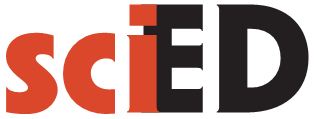Abstract
The article deals with some of the results of questionnaire research conducted during the years 2006–2008 in the Czech Republic. Almost 1900 students of lower secondary schools and more than 2000 students of upper secondary schools scaled their opinions on statements about reasons why they learn physics and about general topics and activities which they would like (or dislike) to do in their physics lessons. The answers were analyzed according to the type of school they attend and their sex and were scaled using 4-point Likert scale. Main findings and conclusions are mentioned and discussed in the contribution.References
ANDĚL, J. Statistické metody. Praha : Matfyzpress, 2003.
DVOŘÁK, L. (ed.). Lze učit fyziku zajímavěji a lépe? Příručka pro učitele. Praha : Matfyzpress, 2008.
ELBANOWSKA-CIEMUCHOWSKA, S. Baví fyzika žáky v Polsku? In . . . aby fyzika žáky bavila. . . 2, Vlachovice 19.–22. 10. 2005, 2005, p. 25–33.
European Commission. Europe needs more scientists. Report by the High Level Group on Increasing Human Resources for S&T in Europe. Brussels, 2004.
FISCHER, H. J., HORSTENDAHL, M. Motivation and Learning Physics. Research and Science Education, 27 (3), 1997, p. 411–424.
GARDNER, P. L. Attitudes to science. Studies in Science Education, 2, 1975, p. 1–41.
GAVORA, P. Úvod do pedagogického výzkumu. Brno : Paido, 2000.
JENKINS, E. W. The Student Voice and School Science Education. Studies in Science Education, Vol. 42, 2006, p. 49.
KENNEDY, P. Preparing for the the twenty-first century. New York : Random House, 1993.
KRAPP, A. Structural and dynamic aspects of interest development: theoretical considerations from an ontogenetic perspective. Learning and Instruction, 12, 2002, p. 383–409.
LAVONEN, J., BYMAN, R., JUUTI, K., MEISALO, V., UITTO, A. Pupil Interest in Physics: A Survey in Finland. Availaible on-line http://http://www.naturfagsenteret.no/tidsskrift/Nordina 205 Lavonen.pdf
MARSAGLIA, G., TSANG, W. W., WANG, J. Evaluating Kolmogorov’s Distribution. Journal of Statistical Software, 8 (18), 2003.
MITCHELL, M. Situational interest: Its multifaceted structure in the secondary school mathematics classroom. Journal of Educational Psychology, 85, 1993, p. 424–436.
OWEN, S., DICKSON, D., STANISSTREET, M., BOYES, E. Research in Science & Technological Education, 26 (2), 2008, p. 113–128.
PRŮCHA, J. Moderní pedagogika. Praha : Portál, 2002.
PRŮCHA, J. (ed.). Pedagogická encyklopedie. Praha : Portál, 2009.
REISS, M. Understanding science lessons: five years of science teaching. Buckingham : Open University Press, 2000.
The Relevance of Science Education. Availaible on-line http://www.ils.uio.no/english/rose/ 2006.
SJøBERG, S., SCHREINER, C. How do students perceive science and technology? Science in School, (1), 2006, p. 66–69.
SVOBODA, E., Höfer, G. Názory a postoje žáků k výuce fyziky. Matematika–fyzika–informatika, No. 4, 2006/2007, p. 212–223.
SVOBODA, E., HÖFER, G. Názory a postoje žáků k výuce fyziky (2. část). Matematika–fyzika–informatika, No. 5, 2006/2007, p. 280–288.
WILLIAMS, Ch., STANISSTREET, M., SPALL, K., BOYES, E., DICKSON, D. Why aren’t secondary students interested in physics? Physics Education, 38(4), 2003, p. 324–329.
Authors who publish with this journal agree to the following terms:
- Authors retain copyright and grant the journal right of first publication with the work simultaneously licensed under a Creative Commons Attribution License that allows others to share the work with an acknowledgement of the work's authorship and initial publication in this journal.
- Authors are able to enter into separate, additional contractual arrangements for the non-exclusive distribution of the journal's published version of the work (e.g., post it to an institutional repository or publish it in a book), with an acknowledgement of its initial publication in this journal.
- Authors are permitted and encouraged to post their work online (e.g., in institutional repositories or on their website) prior to and during the submission process, as it can lead to productive exchanges, as well as earlier and greater citation of the published work (See The Effect of Open Access).
